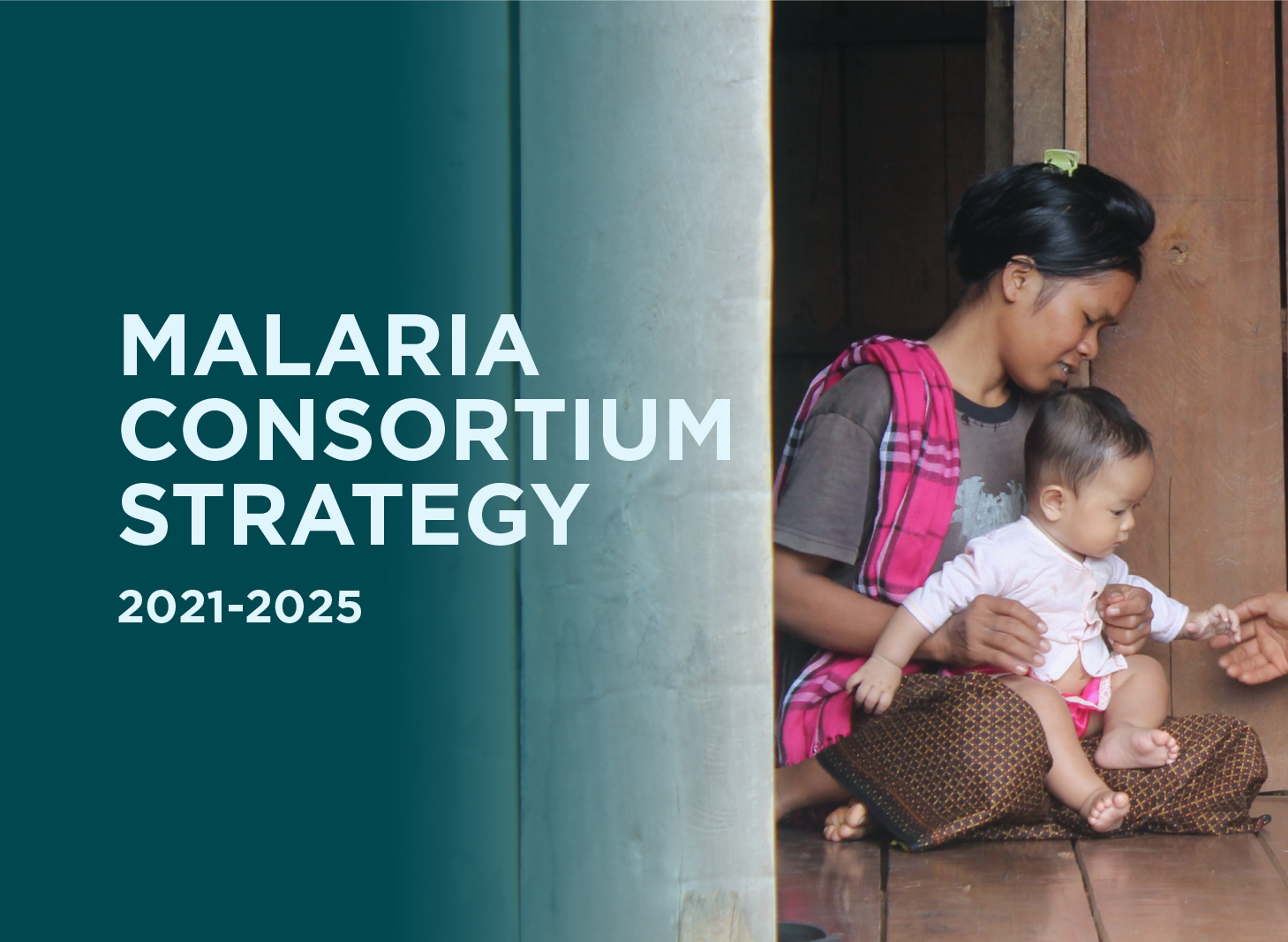Context Overview
Currently, community health workers use a number of devices to diagnose the symptoms of pneumonia in children under five years of age. These range from mobile phone applications, manual respiratory rate timers to coloured counting beads.
This research project is comprised of a series of three research phases, using both qualitative and quantitative methodologies, occuring over a 26 month period. The project is funded by the Bill & Melinda Gates Foundation.
Photo: Malaria Consortium/Tine Frank
Context Overview
Currently, community health workers use a number of devices to diagnose the symptoms of pneumonia in children under five years of age. These range from mobile phone applications, manual respiratory rate timers to coloured counting beads.
This research project is comprised of a series of three research phases, using both qualitative and quantitative methodologies, occuring over a 26 month period. The project is funded by the Bill & Melinda Gates Foundation.
Photo: Malaria Consortium
Context Overview
Currently, community health workers use a number of devices to diagnose the symptoms of pneumonia in children under five years of age. These range from mobile phone applications, manual respiratory rate timers to coloured counting beads.
This research project is comprised of a series of three research phases, using both qualitative and quantitative methodologies, occuring over an 26 month period. The project is funded by the Bill & Melinda Gates Foundation.
Photo: Malaria Consortium
Context Overview
Currently, community health workers use a number of devices to diagnose the symptoms of pneumonia in children under five years of age. These range from mobile phone applications, manual respiratory rate timers to coloured counting beads.
This research project was comprised of a series of three research phases, using both qualitative and quantitative methodologies, occuring over a 26 month period. The project was funded by the Bill & Melinda Gates Foundation.
Photo: Malaria Consortium/Tine Frank
Project details
CountriesCambodia
Ethiopia
South Sudan
Uganda
Donor
Bill & Melinda Gates Foundation
Partner Organisations
Ministries of Health
Scientific Advisory Committee
Start Date
08/11/2013
End Date
31/03/2016
Countries
Cambodia Ethiopia South Sudan UgandaProject overview
This project identified the most accurate, acceptable, scalable and user-friendly respiratory rate (RR) timers and pulse oximeters for diagnosis of pneumonia symptoms in children by community health workers (CHWs) and first level health facility workers (FLHFW) in four low-income countries.
Pneumonia is one of the leading causes of death in children under five in both Southeast Asia and sub-Saharan Africa. A large number of the children who die from pneumonia do so as a result of inappropriate treatment due to misdiagnosis of symptoms. In order to tackle the large number of childhood deaths from this preventable and treatable disease, ministries of health are investing in community health workers to deliver lifesaving diagnosis and treatment with antibiotics.
more
Project brief
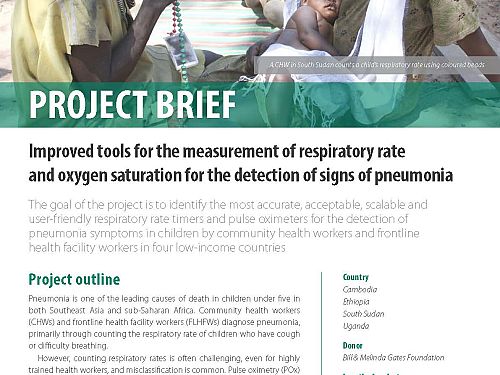 Click here to read
Click here to read
Latest news and blogs
- Blog: Our third year as an Independent Research Organisation: Using research to respond to health inequities and emerging threats 20 February 2024
- Blog: International Day of Women and Girls in Science 2024 9 February 2024
- News: Renewed calls for investment in new pneumonia research priorities to reduce child deaths 14 November 2023
- Blog: Artificial intelligence among innovations supporting improved pneumonia diagnosis 9 November 2023
Research Phases
Objective:
- To systematically review the landscape for existing RR and pulse oximeters devices appropriate for low-resource settings.
- To identify, using pre-defined criteria, the most promising and appropriate devices for field-testing in sub-Saharan Africa and Southeast Asia.
Methodology:
- Landscape analysis
- Formative research
- Stakeholder research
- Device ranking
- Laboratory testing
Findings:
- Over 200 devices documented in the landscape analysis.
- Formative research showed that CHWs strongly desire new diagnostic tools for pneumonia and described issues with the current ARI timer and breath counting process.
- CHWs and national stakeholders expressed a preference for new diagnostic tools to be low cost; time efficient; accurate; simple to use; sustainable; durable; acceptable to CHWs, parents and children; and able to produce automated results.
- While both CHWs and national stakeholders thought the fingertip pulse oximeter to be potentially usable and scalable at the community level, there is currently no experience in using pulse oximeters for the detection of the signs and symptoms of pneumonia.
- Based on the 20 attributes defined through this process, 12 devices were selected for laboratory testing.
- After lab testing nine devices were taken for accuracy evaluation in the field, four respiratory rate timers (respiratory beads, MK2 ARI timer, RRate smartphone app, feature phone app) and five pulse oximeters (Contec, Devon , Lifebox, Utech, Masimo phone POx).
Objective: The study objective is to identify the accuracy of RR timers and pulse oximeters for the detection of pneumonia symptoms by CHWs and FLHFWs in four low-income countries.
Methodology:
- Accuracy of the nine devices when used by community health workers and first level health facility workers were evaluated in a hospital setting in each country, against three reference standards. These reference standards included a medical professional counting, an automated monitoring device (Masimo’s Radical-7) to obtain RR and oxygen saturation (%SpO2) respectively, and thirdly, a sample of videos of the CHWs/FLHFWs using the new devices will be reviewed by a panel of experts.
- Exit interviews were conducted with a sample of CHWs/FLHFWs at the end of their assessments in order to gain insights on their experience diagnosing pneumonia with the new tools.
Objective: To investigate the feasibility of introducing RR and pulse oximeters devices in routine practice for CHWs and FLHFWs and to explore their acceptability to caregivers in four countries across sub-Saharan Africa and Southeast Asia.
Research Methodology:
- Standard assessment: CHW/FLHFWs use a set of devices, including one respiratory rate counter and one pulse oximeter, during routine care. The CHW/FLHFWs use one or more of the devices to assess a child, after obtaining consent, and records it in the data form – minimum 15 assessments in three months per CHW/FLHFW.
- Structured assessment: On a monthly basis the research team observes CHW/FLHFWs assess children using one or both of their devices, after obtaining consent. These assessments are recorded on video to be reviewed by a panel of experts –total 375 assessments of CHWs/FLHFWs in four countries.
- Five CHW/FLHFWs focus group discussions per country.
Related resources
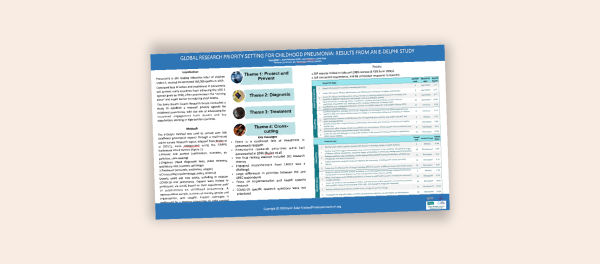 Resource: Poster
Resource: PosterPublished 22 June 2022
Global research priority setting for childhood pneumonia: Results from an e-Delphi study
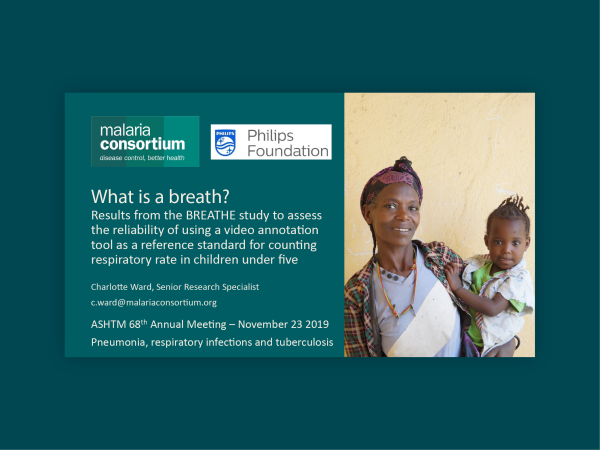 Resource: Presentation
Resource: PresentationPublished 25 November 2019
What is a breath? Working towards an improved reference standard for counting respiratory rate to validate new automated pneumonia diagnostic aids for children under five
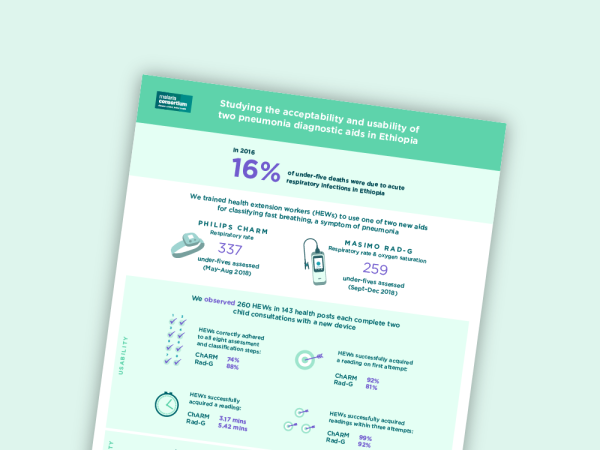 Resource: Infographic
Resource: InfographicPublished 14 October 2019
Studying the usability and acceptability of two pneumonia diagnostic aids
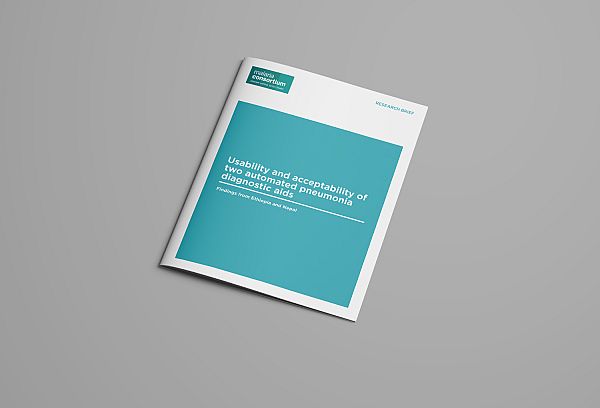 Resource: Research brief
Resource: Research briefPublished 3 October 2019
Usability and acceptability of two automated pneumonia diagnostic aids: Findings from Ethiopia and Nepal
 Resource: Journal article
Resource: Journal articlePublished 1 July 2019
Performance of four respiratory rate counters to support community health workers to detect the symptoms of pneumonia in children in low resource settings
 Resource: Journal article
Resource: Journal articlePublished 25 October 2018
Performance, Acceptability, and Usability of Respiratory Rate Timers and Pulse Oximeters When Used by Frontline Health Workers to Detect Symptoms of Pneumonia in Sub-Saharan Africa and Southeast Asia: Protocol for a Two-Phase, Multisite, Mixed-Methods Trial
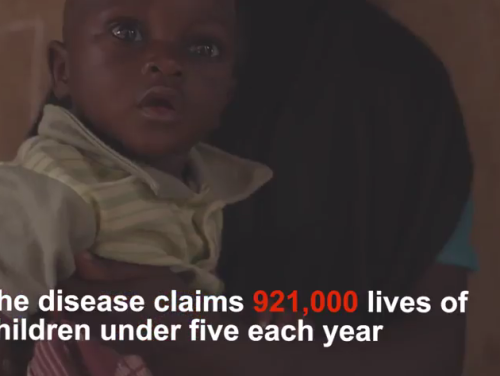 Resource: Advocacy
Resource: AdvocacyPublished 10 November 2017
Pneumonia is preventable and treatable, but deadly
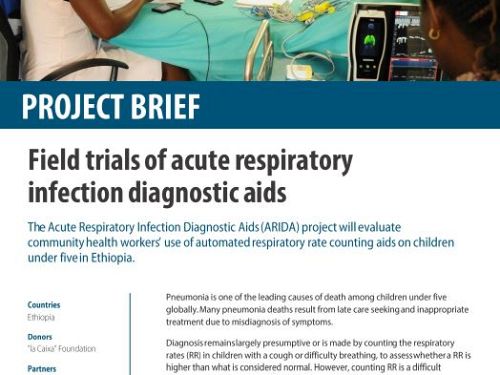 Resource: Project brief
Resource: Project briefPublished 9 December 2016
Acute respiratory infection diagnostic aids field trial: Controlled accuracy study
